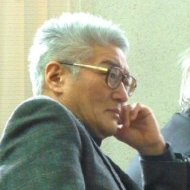Semiconductor Quantum Wells and Nanostructures
A special issue of Nanomaterials (ISSN 2079-4991). This special issue belongs to the section "Nanoelectronics, Nanosensors and Devices".
Deadline for manuscript submissions: closed (2 January 2023) | Viewed by 23885
Special Issue Editor
Special Issue Information
Dear Colleagues,
We are planning a Special Issue of "Nanomaterials" devoted to quantum and classical phenomena in semiconductor quantum wells and nanostructures. It is supposed to contain the papers about quantum and classical transport in low-dimensional electron systems, such as 2D electron gas, 3D and 2D topological insulators, 2D ordinary and Weyl semimetals, quantum wires, rings, and dots. The studies of energy spectrum of semiconductor quantum wells and nanostructures, by means of optical and tunneling spectroscopy, also are acknowledged in the issue.
In this Special Issue, original research articles and reviews are welcome. Research areas may include (but not limited to) the following:
1) quantum and classical transport in low-dimensional electron systems, such as 2D electron gas, quantum wires, rings, and dots;
2) energy spectrum of semiconductor quantum wells and nanostructures (SQWN), 3D and 2D topological insulators;
3) 2D ordinary and Weyl semimetals;
4) thermoelectric and photoelectric phenomena;
5) optical spectroscopy of semiconductor quantum wells and nanostructures;
6) microwave and terahertz spectroscopy of electron states in SQWN.
We look forward to receiving your contributions.
Prof. Dr. Ze Don Kvon
Guest Editor
Manuscript Submission Information
Manuscripts should be submitted online at www.mdpi.com by registering and logging in to this website. Once you are registered, click here to go to the submission form. Manuscripts can be submitted until the deadline. All submissions that pass pre-check are peer-reviewed. Accepted papers will be published continuously in the journal (as soon as accepted) and will be listed together on the special issue website. Research articles, review articles as well as short communications are invited. For planned papers, a title and short abstract (about 100 words) can be sent to the Editorial Office for announcement on this website.
Submitted manuscripts should not have been published previously, nor be under consideration for publication elsewhere (except conference proceedings papers). All manuscripts are thoroughly refereed through a single-blind peer-review process. A guide for authors and other relevant information for submission of manuscripts is available on the Instructions for Authors page. Nanomaterials is an international peer-reviewed open access semimonthly journal published by MDPI.
Please visit the Instructions for Authors page before submitting a manuscript. The Article Processing Charge (APC) for publication in this open access journal is 2900 CHF (Swiss Francs). Submitted papers should be well formatted and use good English. Authors may use MDPI's English editing service prior to publication or during author revisions.
Keywords
- electrons
- spin
- holes
- quantum wells
- low-dimensional systems
- quantum wires and dots
- quantum Hall effect
- topological insulators






